If you’ve ever watched a Japanese period drama, you might have noticed monks wearing large woven hats and playing the shakuhachi flute. These monks are called Komuso, and they are not just wandering monks but individuals who have undergone special training. They also appear in historical games, capturing the interest of many with their mysterious presence.

But why do Komuso monks wear those large hats?
Can they see through them? And why do they play the shakuhachi?

You have a lot of question about Komuso!
In this article, we will explore these questions, delving into their history, attire, and their appearances in video games.
Who Were the Komuso Monks?
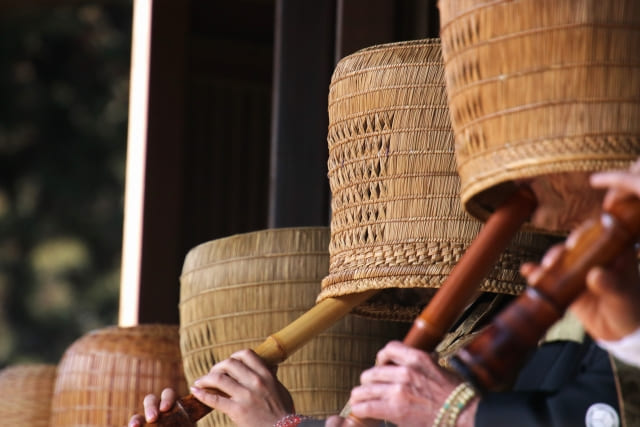
Komuso monks belonged to a Zen Buddhist sect called Fuke-shu, which traces its origins back to Puhua, a Chinese monk from the Tang Dynasty. The sect was introduced to Japan during the Kamakura period.
In Fuke-shu, playing the shakuhachi was considered a means of attaining spiritual enlightenment. However, unlike regular Buddhist monks, only those from samurai backgrounds were allowed to join.
To become a Komuso, one needed a credible samurai guarantor and had to fulfill strict requirements, including paying an admission fee and taking an oath before the sect’s ancestral spirit. This made Komuso monks a unique and exclusive group.
Komuso Attire and the Mystery of the Hat
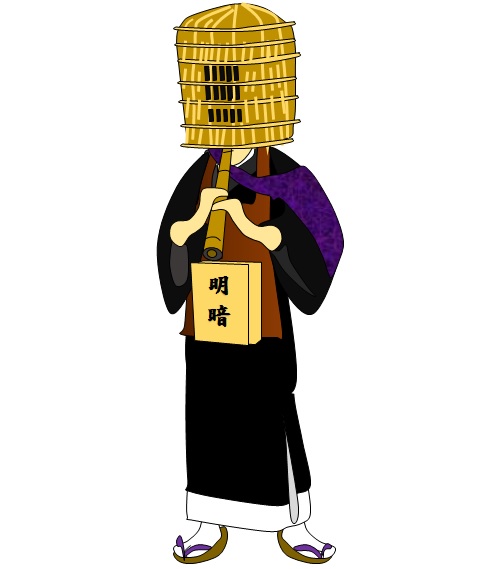
Komuso monks had a distinct attire, which included:
| Hat(天蓋/Tengai) | A deep, woven straw hat covering their face. However, it wasn’t completely blind; it had small openings called doko, allowing them to see outside. |
| Clothing(小袖/kosode) | During the Edo period, the Tokugawa shogunate mandated that Komuso monks wear plain blue or gray robes without any family crests. |
| Kesa(袈裟) | A Buddhist stole draped over the back. In the drawing, “Kesa” is the purple fabric. |
| Footwear(草鞋/Waraji) | Five-layered straw sandals. |
| Shakuhachi(尺八) | The flute played as part of their spiritual practice and also used for alms-gathering. |
| Gebako(偈箱) | The box they have in front is called Gebako. |
Unlike typical monks, Komuso monks did not shave their heads, further distinguishing them from other Buddhist sects.
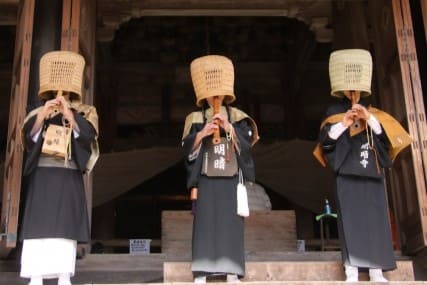
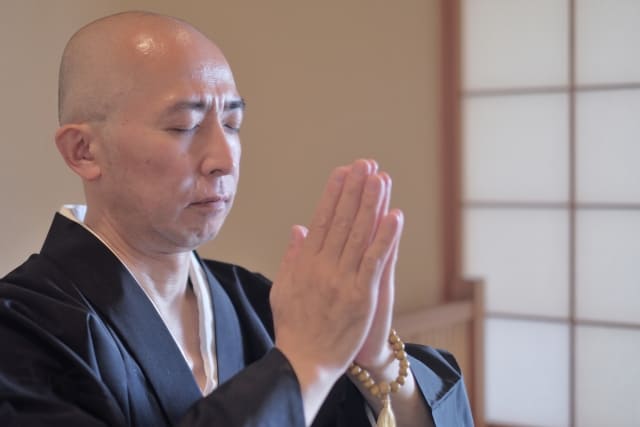

Komuso look a little bit scary.
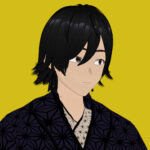
You look more scary Lol.
Komuso and the Tokugawa Shogunate
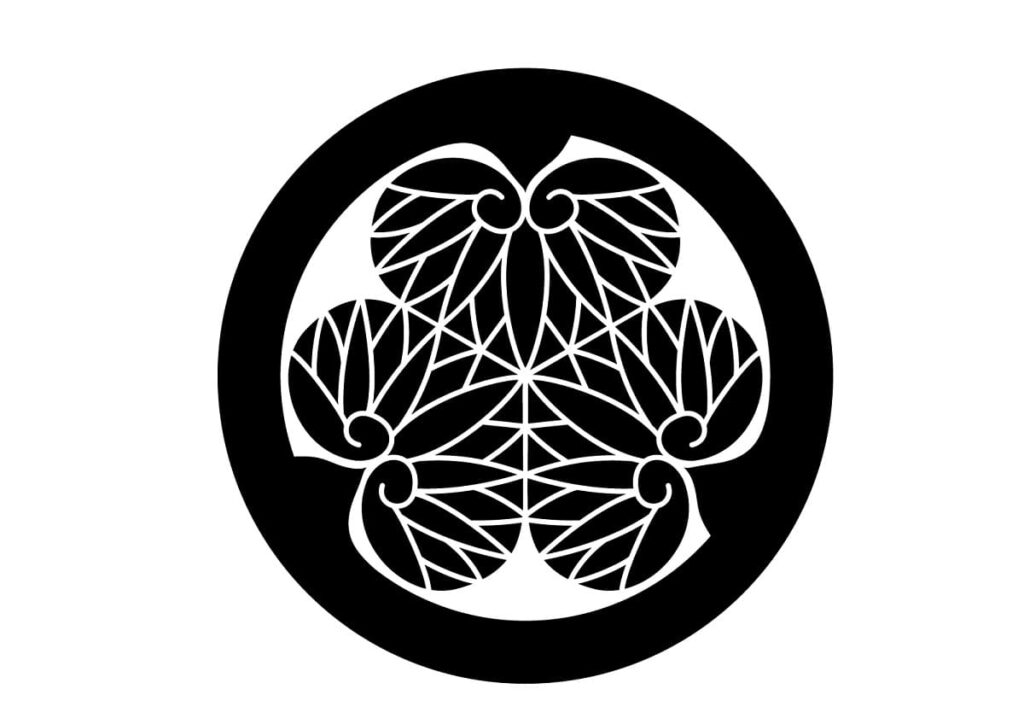
During the Edo period, Komuso monks received official recognition from the Tokugawa government. A document attributed to Tokugawa Ieyasu in 1614, known as the Keicho Ordinance, granted them special privileges, including:
- Permission to carry swords
- Freedom to travel for martial training or revenge missions
- The right to keep their tengai hat on at all times
This shows that Komuso monks were not just religious figures but had strong ties to the samurai class.
Because of these privileges, ronin (masterless samurai) and spies often disguised themselves as Komuso monks. This association has led to their frequent depiction in period dramas and games as stealthy warriors or spies.

No wonder!
sometimes Komuso in Rise of the Ronin are so dangerous!
The Disappearance and Revival of Komuso
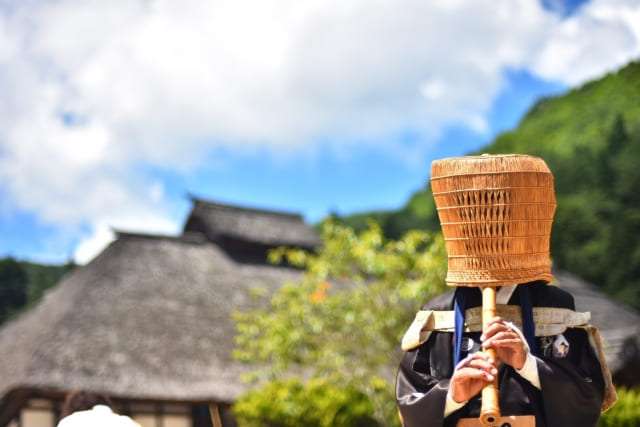
During the Meiji period, the Japanese government abolished Fuke-shu, leading to the disappearance of Komuso monks. Their traditions were nearly lost, but in 1888, Kyoto’s Tofukuji temple established Myoanji, reviving Komuso pilgrimage practices.
Today, the Komuso tradition continues, albeit in a much smaller and symbolic way, mainly as part of Zen Buddhist shakuhachi practice.
Komuso in Video Games
Komuso monks have made appearances in various video games, often depicted with their signature tengai hat and shakuhachi flute. Notable examples include:
Ōkami
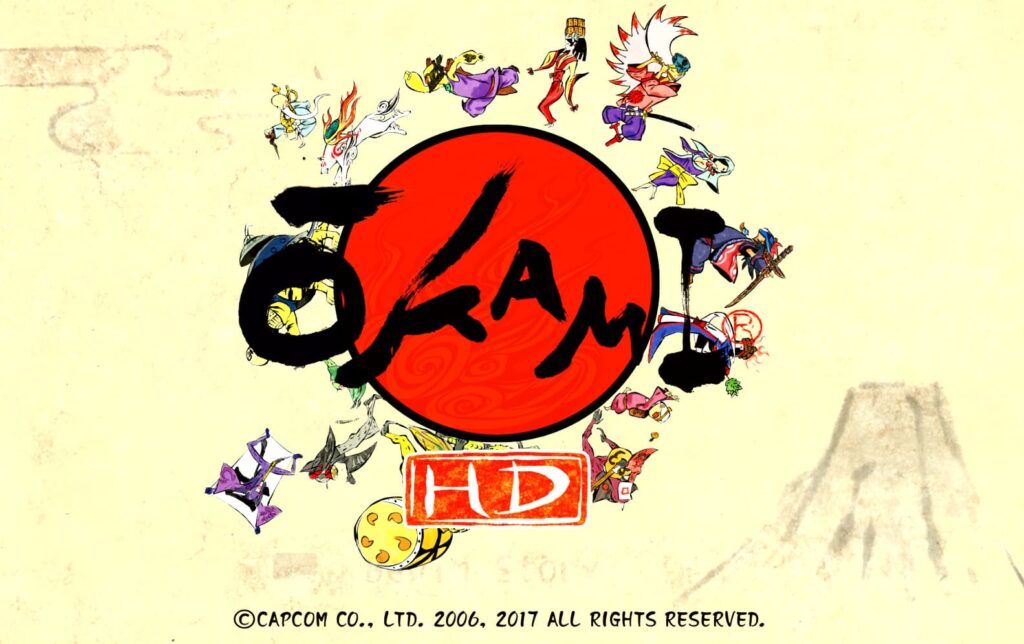
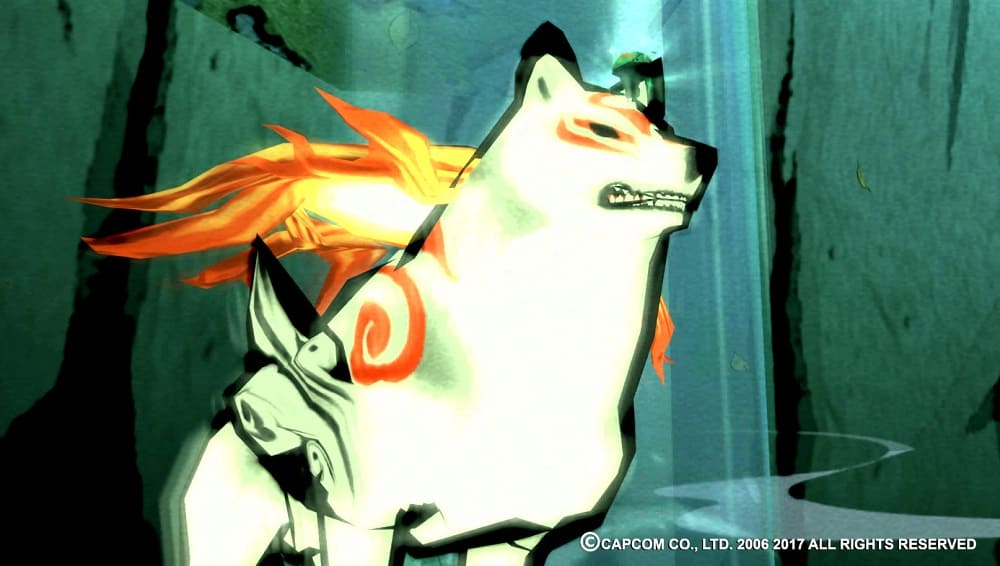
In the game Ōkami, the Japanese sun goddess Amaterasu appears in the form of a wolf. This game is also known for featuring Komuso monks. When you talk to a Komuso monk, a battle event is triggered, leading to a fight against yokai characters. If you defeat all enemies within the given time limit, you can earn valuable items.
Rise of the Ronin

This open-world action RPG focuses heavily on combat and also features Komuso monks. However, their behavior is quite unique—some demand alms, while others suddenly attack you, acting in ways that seem quite uncharacteristic for Buddhist monks.
Conclusion
Komuso monks were more than just wandering priests; they were an elite group of warrior-monks from samurai backgrounds.
- They belonged to the Fuke-shu sect and sought enlightenment through shakuhachi playing.
- They were officially recognized by the Tokugawa government and allowed to carry swords.
- Their unique attire made them ideal disguises for ronin and spies.
- They were abolished in the Meiji period but later revived in a limited form.
- They appear in popular culture, especially in video games.

If you are interested in Japanese culture, you may love these games!
Let’s play!
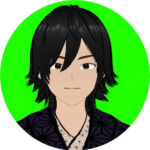
Yes! Let’s play!

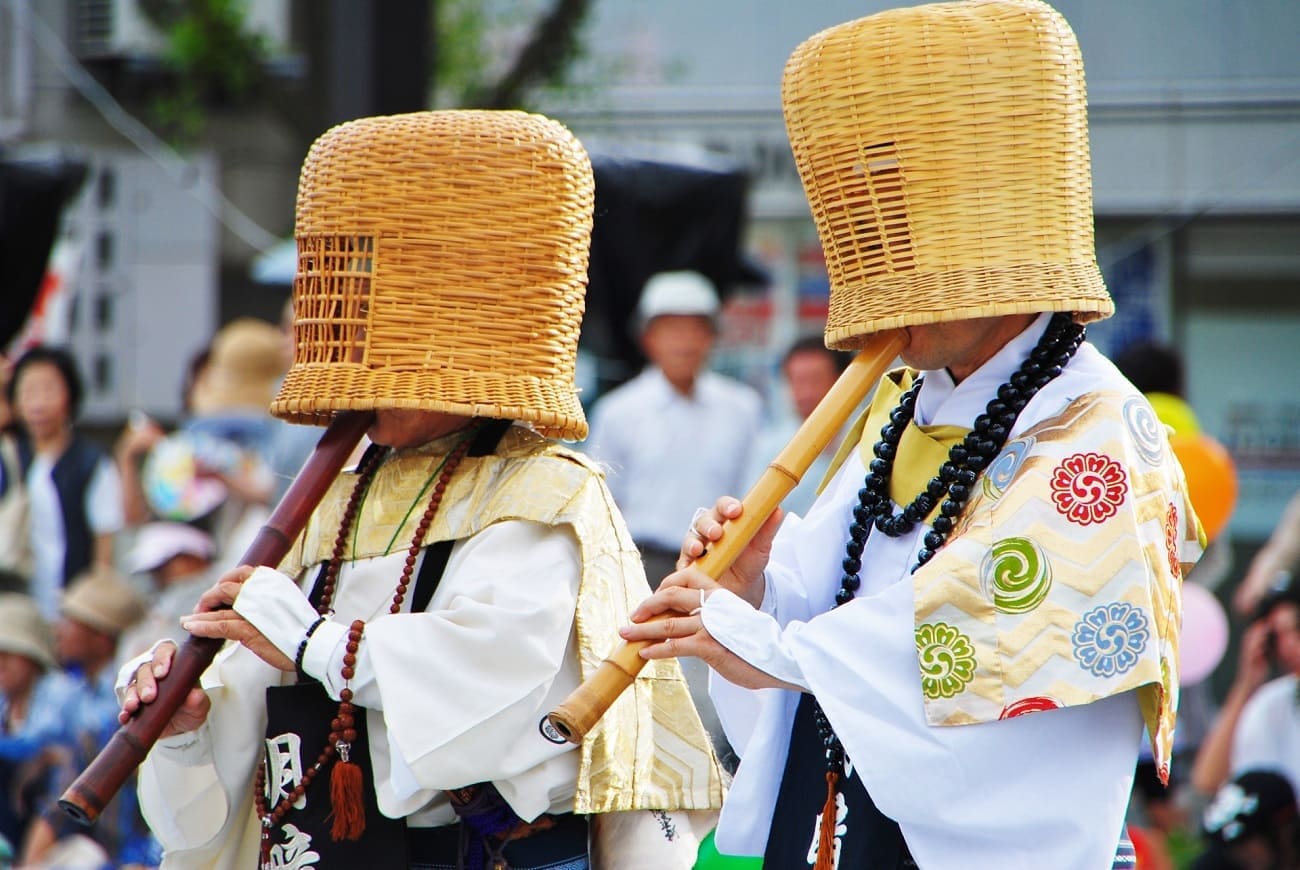
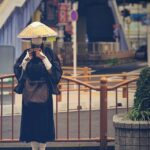

Comments